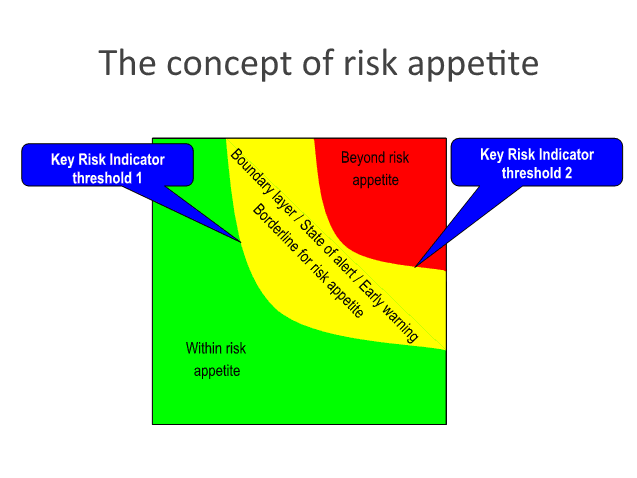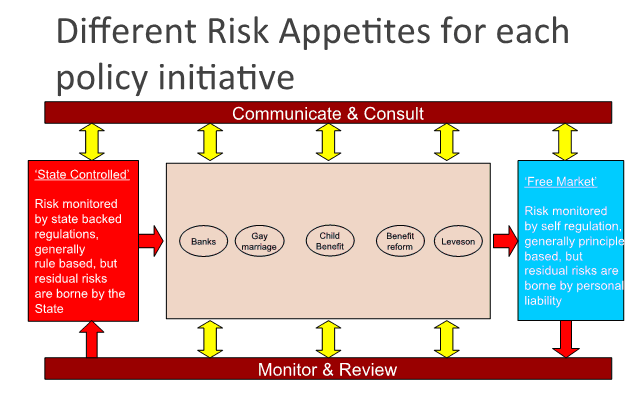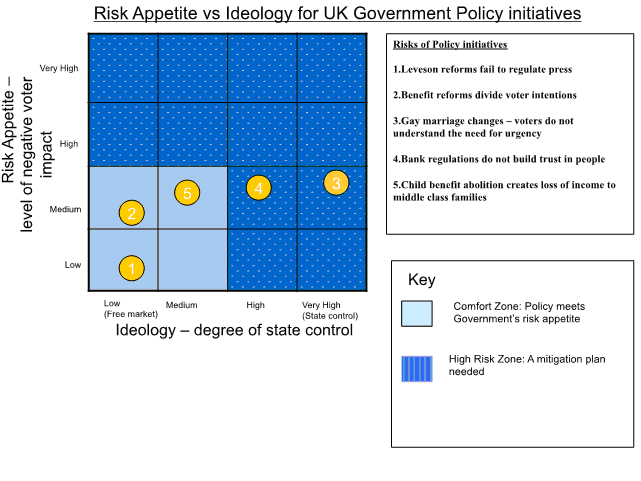Defining Risk Appetite for Public Organisations

This paper discusses the importance of risk appetite to the governance process in public services.
1. Explains a way of articulating risk appetite
2. Introduces a framework for developing a risk appetite statement
3. Building an illustrative risk appetite statement
4. Policy proposals
Part 1: Articulating Risk Appetite
Risk appetite is defined as the amount and type of risk that the Government is prepared to seek, accept or tolerate. A risk appetite is a subset of risk culture. Risk culture requires clarity about, and commitment to, the enforcement of risk appetite or tolerance.
Currently, there are no published risk appetite statements for the Government, although most Government departments intuitively know how much risk to take for each policy.
The benefits of embedding a common risk appetite and culture are as follows:
- Builds resilience if the risk crystallises
- Enhances proactive management of risk when launching new policy initiatives
- Consistent approach to the way Government operates, especially under the Civil Service Reform Plan
- Training on risk management to educate civil servants. Empower and encourage civil servants to take more risks in a controlled way
- Strengthen Government’s big society drive to empower communities and encourage volunteerism
Part 2: Framework for developing a risk appetite statement
When a risk crystallises, it can fall into one of three categories:
- The risk is high and beyond the risk appetite and as such it should be treated to identify options and select the best response. A treatment plan is required to implement and assess residual risks
- The risk moderate and as such the Government can decide to accept the risk or treat as (1) above
- The risk is low and as such accepts the risk and no action is required
The diagram below explains how key risk indicator thresholds could determine which category (1 to 3 above) it could fall into:

Businesses normally measure risk appetite by impact on the Balance Sheets and Cash flows. On the other hand, the following stakeholders influence the Government’s risk appetite with varying degrees on influence:
- Party’s core voters and voters in marginal seats
- Press, media, lobbyists
- Third sector – Think tanks, pressure groups, charities and the judiciary
Unions
As a start, we propose that Government estimates risk appetite as a function of political ideology and negative voter intentions before introducing a new policy as described below.
Our proposed method has two steps:
Step 1 is to assign which ideology the policy belongs to as shown below:

Step 2: is to match this to map risk appetite (measured by negative voter intentions) to ideology

The Government has four options for those policies, which are outside the comfort zone (4Ts):
Tolerate – Accept the risk and pursue with the implementation of the policy
Terminate – stop the implementation of the policy
Transfer – transfer the risk to outside Government. This is similar to company increasing insurance arrangements
Treatment of risk – Perform a full risk assessment to quantify residual risks. Create a robust communication plan to reduce the risk.
In practice, Government will be reluctant to use risk appetite methodology described above, as they feel some policies are so strategically important (HS2, Heathrow 3rd runway, Fracking) that it is impossible to adhere to a strict framework. Nevertheless, we believe this is a tool that could be used by Government to proactively to assess policies before going live.
Part 3: Building an illustrative risk a risk appetite statement
A typical risk appetite statement for a Government department should include following core characteristics:
- Risk must be commensurate with sustainable returns
- Strong budgetary control
- Restrict borrowing
- Sustainability and longer term growth
- Maintain strong brand
- Strong project management and governance
- Risk diversification
These core characteristics should be applied to define the risk appetite statements at all levels of Government and as such the Cabinet should set a risk appetite for each department and for each Government policy.
Part 4: The Bow Group Policy Proposals
Recommendations:
- Map all policy initiatives already implemented by the Government and identify those policies which fall outside the ‘comfort zone’. Discuss this at Cabinet meetings and create a risk mitigation plan before the General Election
- Proactively initiate research before implementing a new policy to assess risk appetite and create a proactive risk mitigation plan
- Each Government department to publish a risk appetite statement. Government to publish an overall risk appetite in the Manifesto
